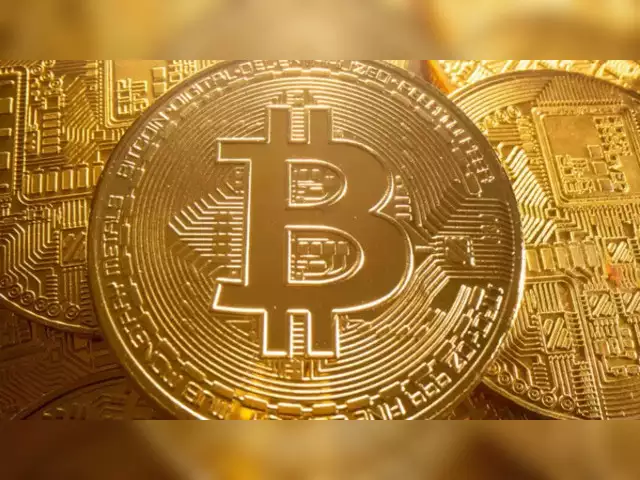
Bitkoino vertės sumažėjimas perpus - kada, kur, kodėl ir kaip?
Nors iki planuojamo įvykio liko dar maždaug 8 mėnesiai, kriptovaliutų bendruomenė jau dabar ruošiasi 2024 m. perpus mažesnei bitkoinų vertei. Jis vyksta kas ketverius metus ir sulaukia didelio dėmesio ne tik iš kriptovaliutų biržų, bet ir iš kriptovaliutų sektoriaus įmonių ir pradedančiųjų įmonių.
"Bintense" norime, kad mūsų klientai būtų gerai informuoti apie tai, kas vyksta pramonėje, ypač kai kalbama apie tokį svarbų įvykį kaip bitkoinų sumažinimas perpus. Todėl norime įsigilinti į šį procesą, kad galėtumėte suprasti, ką jis jums reiškia.
Ką reiškia "Bitcoin" sumažinimas perpus?
Bitkoinų vertės sumažėjimas perpus yra neeilinis įvykis, nes tai nutinka maždaug kas ketverius metus. Įsivaizduokite, kad turite šokolado plytelę ir kasdien galite ją laužyti tik į mažesnius gabalėlius, kad padovanotumėte žmonėms.
Tačiau yra gudrybė: kas ketverius metus dalių skaičių galite padalyti per pusę. Taigi, jei pradėjote nuo 8 dalių, padaliję jas perpus, galėsite padalyti tik į 4 dalis, tada į 2 dalis ir t. t.
Tai panašu į tai, kaip veikia "Bitcoin". Tai tarsi skaitmeninė valiuta, o ją sumažinus perpus, sunkiau sukurti naujų bitkoinų. Šis trūkumas ir yra tai, kuo bitkoinas ypatingas, nes jo pasiūla yra ribota, kaip ir aukso. Žmonės labai susijaudina dėl kiekio sumažinimo perpus, nes tai gali turėti įtakos tam, kaip žmonės jį naudoja, ypač kai paklausa didėja tuo metu, kai pasiūla mažėja.
Bitcoin sumažėja perpus iki 2024 m.
Kalbant apie 2024 m. bitkoinų padalijimo perpus ypatumus, turėtumėte žinoti, kad tai įvyks balandžio 15 d. Tą dieną atlygis už bloką bus sumažintas perpus - nuo 6,25 iki 3,125.
Tai jau ketvirtas perpus sumažintas bitkoinas nuo blokų grandinės sukūrimo. Nors tikslaus dienos laiko numatyti negalima (dėl galimo vėlavimo), perpus mažinimas įvyks 740 000 bloke.
Taip pat norėtume paminėti, kad pusiau padalijimai vyksta kas 210 000 blokų, kol tinkle sukuriama maksimali 21 milijono bitkoinų pasiūla. Ši dinamika lemia, kad bitkoinai išsipučia. Panašiai kaip ir aukso atveju, vartotojams, norintiems įsigyti bitkoinų, bus vis sunkiau rasti pakankamą pasiūlą, nes atlygis bus mažesnis.
Sumažinimo perpus nauda
Bitkoinų padalijimas per pusę suteikia kriptovaliutų ekosistemai keletą reikšmingų privalumų. Pirma, jis veikia kaip integruotas mechanizmas, leidžiantis kontroliuoti naujų bitkoinų emisijos tempą, užtikrinantis kontroliuojamą ir nuspėjamą pasiūlos didėjimą. Ši kontroliuojama pasiūla yra labai svarbi kuriant retumo jausmą, panašų į brangiųjų metalų, pavyzdžiui, aukso, jausmą, kuris gali sustiprinti naudotojų vertės suvokimą ir pasitikėjimą.
Antra, renginių apimties sumažinimas perpus yra viena iš planuojamo ekonomikos skatinimo formų. Mes, Bintense, manome, kad naujų bitkoinų kūrimo sumažinimas gali paskatinti naudotojus išlaikyti turimus bitkoinus. Tai savo ruožtu gali prisidėti prie bitkoinų tinklo stabilumo ir atsparumo, skatinant naudotojų dalyvavimą ir indėlį į decentralizuotą ekosistemą.
